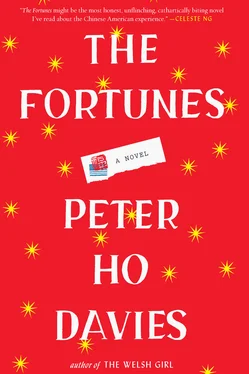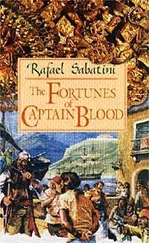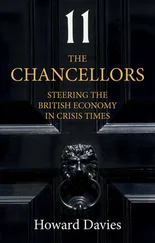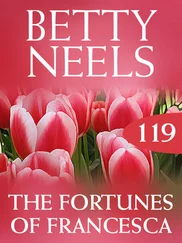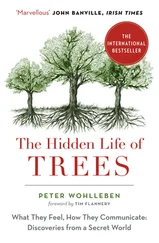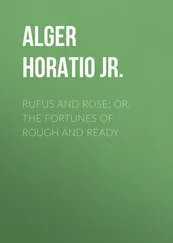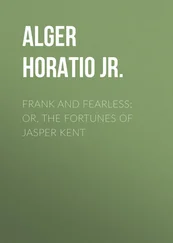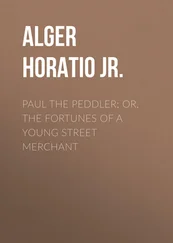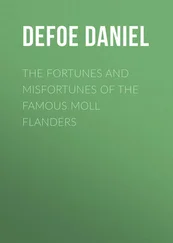Nola’s weight softens imperceptibly against him; her breath slowly settles.
He pictures Pearl looking back at the earth, wonders what she’ll see. A cloudy blue marble, like a cataracted eye? A place of pollution, overpopulation? Or will China’s increasing global influence have extended to inspiring (or enforcing?) one-child policies in other countries? Will the draconian salvation of one nation extend to the world? And will China’s own lingering authoritarianism enable the country to belatedly but swiftly curb its emissions?
But really what he wonders is how this future Pearl — this taikonaut! — will think of him and Nola. Will they even be alive still, or still together? Will she resent them for taking her from a resurgent East (at the start of the Chinese century) to a fading West (at the end of the American one)? Or for her name ( Pearl? Kids will call her Pearl of the Orient, Pearl Harbor, he realizes; she’ll have to tell them I’m not Japanese! or Hawaiian! )? For her sense of alienation, marginalization?
Or maybe, just maybe, she will belong… maybe in 2032, on the fiftieth anniversary of the tragedy, America would declare a Vincent Chin Day to honor the diversity of Asian America. Maybe the other girls — Celeste, Gertie, and the rest — would go on to be athletes and celebrities, justices and presidents (of Amtrak, of GM, of the Academy of Motion Picture Arts and Sciences!).
And maybe she wouldn’t look back at the earth anyway but rather at the stars. H. S. Tsien, he recalls now, trained as a railway engineer and ended up as a rocket scientist. Who could possibly tell the future?
Nola is snoring again, her breath gently flaring.
Over her shoulder he sees the clock has slid silently past midnight.
But he’s grateful at last for his sleeplessness, glad to be alert, as if standing watch over this new family. Like a terra-cotta warrior. It recalls his dream on the bus back to the hotel of Xi’an, of the terra-cotta army, and of the men — that other army, of artisans — who made them. He’d imagined the cold clay dense and tacky in his fingers as he tried to summon a face to sculpt, one unlike all the others. Who should it be? A friend, a brother? Who among all the possibilities? The choice had paralyzed him in his dream, or at least he’d woken before he could decide, still with a sense of lingering panic.
He thinks now of all those silent figures, rank upon rank of men, waiting patiently underground, invisible and forgotten (“the original ancient Chinese secret,” as Nola whispered) until discovered by local farmers digging a well in the 1970s. John had presumed them buried by time, but in fact they’d been deliberately interred in carefully paved trenches, roofed over with timber and tamped dirt, as if lined up in long lightless tunnels. He’d pictured them being unearthed whole too, but apparently only one among all the thousands had been found intact, all the rest painstakingly reconstructed from pieces and shards sifted and brushed from the soil, the scope of the original undertaking matched only by the scale of the recovery effort.
And what a literal act of representation! Life-sized, and one-to-one, armed with real weapons. That’s what really takes the breath away. (That and the megalomania of the first Qin, or Chin, emperor; then again, the country was named after him!) John has seen a handful of touring figures in museums at home, but what he’s never appreciated before is how together, en masse, the army — for all the artistry of the individual figures, detailed down to the lines on their hands, the moles on their faces, the weave of their queues — is barely a representation at all, as close to real as possible, each figure standing for precisely one man, representing only himself.
Thousands of figures, maybe hundreds of thousands, crafted by thousands of workers; John suddenly imagines each making a single face. In which case, he thinks, watching Pearl’s tiny hands open and close in her sleep and flexing his own in echo, as if to knead the air, imagining the dry clay on his knuckles cracking in gray flakes, what choice but a self-portrait? What else can we represent if not ourselves, however uncertain or contradictory those selves might be? After all, aren’t those very contradictions and uncertainties what make us ourselves?
It’s just a dream, he knows, based on a tourist’s fleeting visit. But this is what he’ll tell Pearl first, he thinks, when she asks, as she will ask, as she will be asked ( Where are you from? ), about China.
My thanks are due to many for their assistance and encouragement in the completion of this project: to Nicholas Delbanco, Marshall Klimasewiski, Zachary Lazar, and Louisa Lim for reading and commenting on various drafts; to Roland Hwang and Frances Kai-Hwa Wang for talking with me about the Vincent Chin case; to Dan Keane and Jennifer Tomscha for their hospitality in Shanghai; to Angela Healy for the inspiration; to the 2015 Kundiman faculty, fellows, and organizers for welcoming me into their community; to the University of Michigan, in particular the Department of English for research funds, the Institute for the Humanities for writing time, and my colleagues and students in the Helen Zell Writers’ Program for their fellowship in our shared endeavor; to my agent, Maria Massie, ever my sure guide through the publishing woods; to Janet Silver and Andrea Schulz, for their help along the way; to my U.S. editor, Jenna Johnson, who made this a better book, and to all at Houghton Mifflin Harcourt (Lauren, Pilar, Megan, Carla, Lori, Debbie, Bruce, Ken, Rachael, and Liz) who continue to make their publishing house feel like my home; to Carole Welch, my U.K. editor, for her faith and patience, and to all at Sceptre, my house at home. Lastly, my deepest thanks to Lynne for everything, always, and to Owen for giving me hope for the future of reading.
Numerous books and articles were consulted in the course of writing this novel. What follows is only a partial list.
On the building of the railroads, I’m indebted to David Haward Bain’s Empire Express and The Old Iron Road (and to David’s enthusiasm for the project when he heard me read from it in early form at the Bread Loaf Writers’ Conference in 2011). Stephen Ambrose’s Nothing Like It in the World and Richard White’s Railroaded were also valuable sources.
Bury My Bones in America, by Lani Ah Tye Farkas, and Canton Footprints, by Philip P. Choy, were helpful in imagining the experience of early Chinese immigrants in California.
Two biographies in particular, Perpetually Cool: The Many Lives of Anna May Wong, by Anthony B. Chan, and Anna May Wong: From Laundryman’s Daughter to Hollywood Legend, by Graham Russell Gao Hodges, informed my understanding of the actress.
The following greatly contributed to my understanding of the Vincent Chin case: Asian American Dreams, by Helen Zia; the documentary Who Killed Vincent Chin? directed by Christine Choy and Renee Tajima-Peña; Building Our Legacy: The Murder of Vincent Chin, a trial reenactment scripted by the Asian American Bar Association of New York, Dean Frank H. Wu, and the Honorable Denny Chin; and the article “The Man Who Killed Vincent Chin,” by Michael Moore in the Detroit Free Press.
Adoption texts that were especially informative include Intercountry Adoption from China: Examining Cultural Heritage and Other Postadoption Issues, by Jay W. Rojewski and Jacy L. Rojewski; The Lucky Ones: Our Stories of Adopting Children from China, edited by Ann Rauhala; West Meets East: Americans Adopt Chinese Children, by Richard Tessler, Gail Gamache, and Liming Liu; and the article “I Met My Daughter at the Wuhan Foundling Hospital,” by Bruce Porter, in the New York Times Magazine.
Читать дальше
